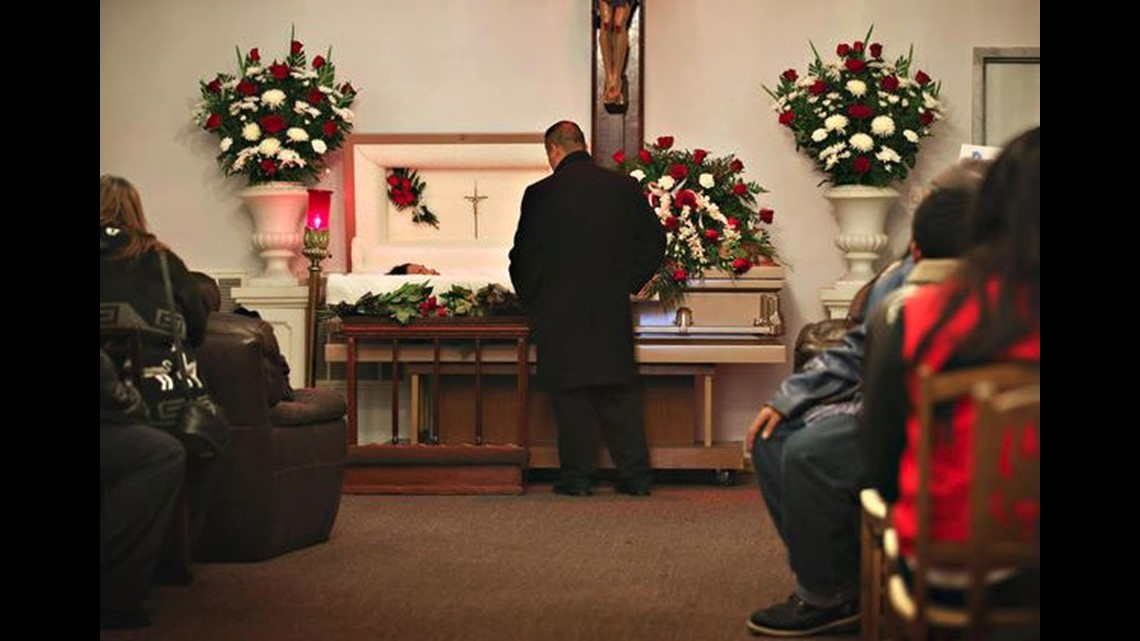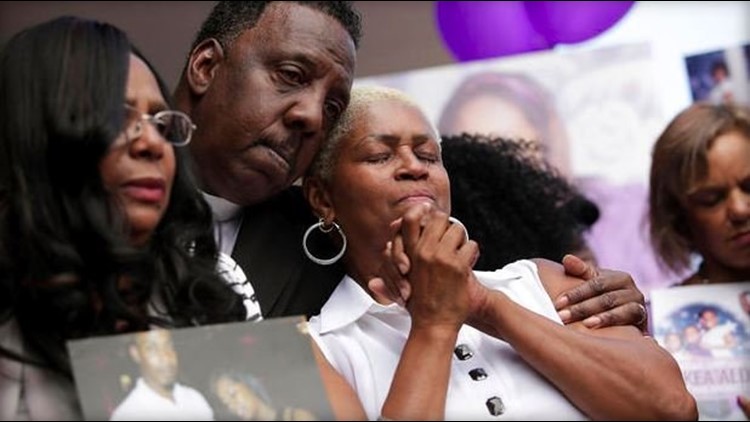CHICAGO (CBSNews) — One of the most violent years in Chicago history ended with a sobering tally: 762 homicides, the most in two decades in the city and more than New York and Los Angeles combined.
The nation’s third largest city also saw 1,100 more shooting incidents in 2016 than it did in 2015, according to data released Sunday by the Chicago Police Department.
New York, the nation’s largest city, logged 334 homicides in 2016, according to the New York Daily News, while the country’s second-largest city, Los Angeles, saw 294, reports the LA Times.
The Chicago statistics underline a story of bloodshed that has put the city at the center of a national dialogue about gun violence.


The numbers are staggering, even for those who followed the steady news accounts of weekends ending with dozens of shootings and monthly death tolls that hadn’t been seen in years. The increase in homicides compared to 2015, when 485 were reported, is the largest spike in 60 years.
Police and city officials have lamented the flood of illegal guns into the city, and the crime statistics appeared to support their claims: Police recovered 8,300 illegal guns in 2016, a 20 percent increase from the previous year.
Chicago Police Superintendent Eddie Johnson said during a news conference Sunday that Chicago is among many U.S. cities that have seen a spike in violence, including in attacks on police.
Several of the top 10 largest U.S. cities saw a spike last year in homicides. San Antonio police say they investigated 151 homicides in 2016, marking the deadliest year in the Alamo city in more than two decades. The homicide count – up 61 percent from a year ago – is the highest since 142 homicides were reported in 1995. Last year, the tally was 94.
In San Jose, 47 homicides were reported in 2016, a 25-year high, reports the San Jose Mercury News. San Diego and Dallas also saw upticks in murders last year, but year-end data wasn’t immediately available.
While New York City saw a slight decrease in homicides and Los Angeles a slight increase for 2016, both have hit historic lows in the past several years. Philadelphia, which has also seen a dip in murder rates overall, saw a small decrease for 2016.
Johnson said anger at police, including in the wake of video released that showed a white Chicago officer shooting a black teenager 16 times has left criminals “emboldened” to violent crimes.
He also said it’s becoming clearer to criminals that they have little to fear from the criminal justice system.
“In Chicago, we just don’t have a deterrent to pick up a gun,” he said. “Any time a guy stealing a loaf of bread spends more time pre-trial in jail than a gun offender, something is wrong.”
Johnson, who has for months complained about Illinois’ lax gun laws, said he thinks more gang members are arming themselves because the price for being caught is small compared to other large cities. He said gang members he has spoken to consider the court system “a joke.”
The bulk of the deaths and shooting incidents, which jumped from 2,426 in 2015 to 3,550 last year, occurred in only five of the city’s 22 police districts on the city’s South and West sides, all poor and predominantly black areas where gangs are most active.
Police said the shootings in those areas generally weren’t random, with more than 80 percent of the victims having previously been identified by police as more susceptible because of their gang ties or past arrests.
The city has scrambled to address the violence. Mayor Rahm Emanuel announced last year that 1,000 officers would be added to the police department. At the same time, police officials have been trying to figure out why homicides and shootings – which began climbing the year before – suddenly surged.
In a tweet, President-elect Donald Trump called the Chicago murder rate “record setting” and said, “If Mayor can’t do it he must ask for Federal help!”
Emanuel said in 2015 he welcomed federal help after the U.S. Justice Department announced a civil rights probe into the department.
On Sunday, Johnson said he hoped several initiatives – including more street cameras in some of the city’s most dangerous neighborhoods, and the expansion of gunshot-detection systems – would lead to more arrests and drive down the violent crime rate.
Johnson has said several factors have contributed to the increased violence. He noted 2016 was the first full year since the city was forced in November 2015 to release video of the fatal police shooting of Laquan McDonald, the black 17-year-old boy who was shot 16 times by a white police officer.
The video cost former Chicago Police Superintendent Garry McCarthy his job, sparked major protests around the city, and led to federal and state investigations of the police department.
It also left Johnson with the task of trying to restore public trust in what appeared to be a weakened police force, a perception that was only buttressed by a dramatic drop in the number of arrests in 2016.
The police department has cited several factors for the declining numbers, including a concerted effort not to make minor drug arrests and focus on gun violence. Johnson pointed to gun arrests and gun seizures as evidence that his officers are aggressively fighting crime.
But critics said they have no doubt that officers have become far more reluctant to do their jobs since the McDonald video was released and the officer who killed the teen was charged with murder.
“It’s almost like a pull back so they (gangs) can kill each other sort of thing,” said the Rev. Marshall Hatch, a prominent minister in one of Chicago’s most dangerous neighborhoods on the West Side.
Johnson acknowledged in a recent interview with The Associated Press that officers have become more cautious – in part out of fear of becoming the next “viral video.” He also said a state law that took effect last January requiring officers to fill out lengthy contact cards when they stop someone has resulted in fewer stops, because the cards require more paperwork for officers and the cards are “scrutinized” by federal judges.
He said those concerns are not lost on criminals.
“Criminals watch TV, pay attention to the media,” he said. “They see an opportunity to commit nefarious activity.”



